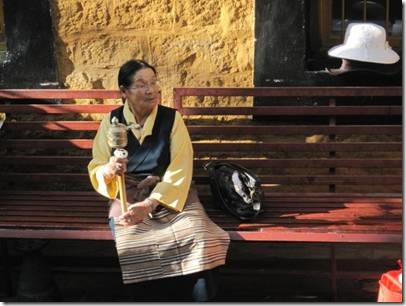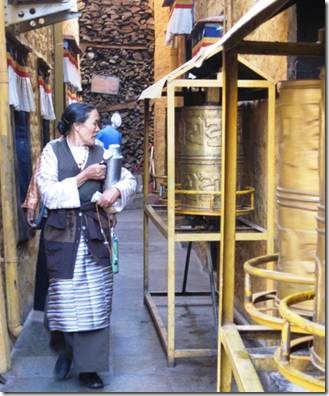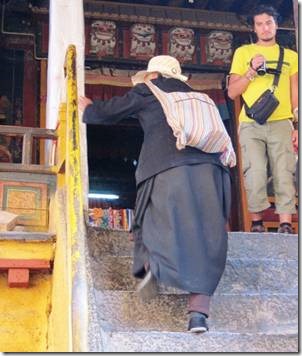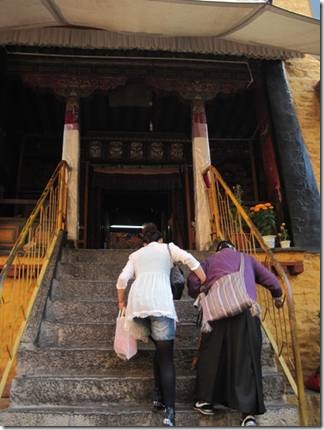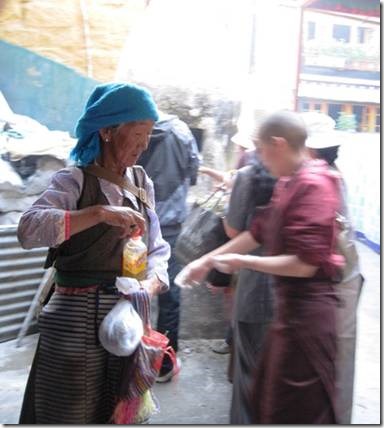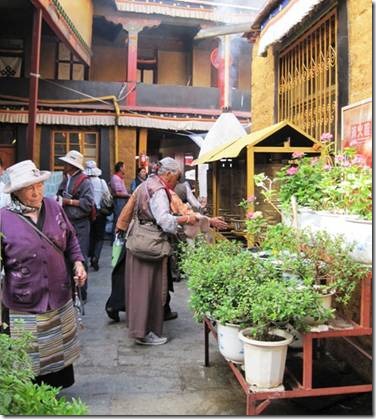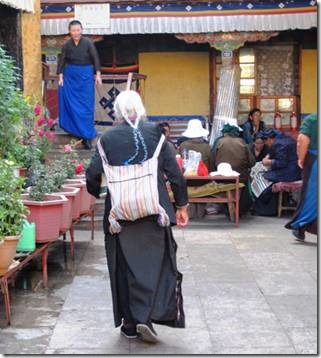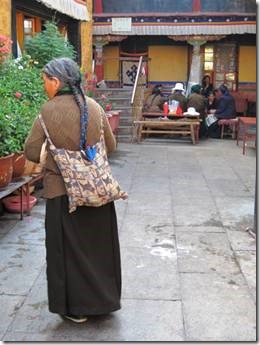Tibet # 7 Ani tsang kung nunnery and Women of Lhasa Part 2
http://kekexili.typepad.com/life_on_the_tibetan_plate/2008/02/tibetan-women.html is a pretty interesting website and this specific link talks about Tibetan women and their lives and clothing.
Each morning and evening hundreds of people walk several circuits around the Barkhor market area that surrounds the Jokhang Temple and the nunnery. They carry prayer wheel which is what this lady has in her hands. She has probably done her circuits and is no resting. She is wearing traditional Tibetan dress that you see on many Tibetan women regardless of age. The apron is worn to indicate she is married. Only married women wear them. If a woman becomes a widow or divorced, she no longer wears an apron. Lobsang said that men wear no rings or article of clothing to indicate their marital status. Hmmmm
This woman is carrying a thermos of either hot oil or water, both used as offerings and also a handful of Tibetan money of small denominations to leave as donations. She is walking past the prayer wheels at the nunnery.
David, video camera in hand, waits patiently while this Tibetan granny climbs the stairs to pray. So many layers of clothing which are probably needed in the winter.
A young woman in cut-offs and tights helps an older woman in traditional dress. You never saw a Tibetan woman’s legs though the Chinese women often wore typical western dress. I wore a skirt that fell about 3 inches below my knee and socks over my ankles and heavy shoes but I noticed people noticing that my skirt didn’t reach to my ankles. Or maybe they were noticing my clunky shoes? O wore a skirt because it needs less washing than pants, is better for squat toilets, and is cooler than long pants.
I love her face and bright blue head wrap.
Lots of hats and aprons. Lobsang said that in the cities women tend not to marry until their mid-20s though nomadic women marry much earlier. I read on one website that Chinese women in Tibet are allowed one child but Tibetan women are allowed two. Nomadic women probably fall under less regulation.
Many women wore long braids with colored ribbon wound through them. The nuns wore big blue aprons while performing chores.
This woman also has ribbon in her braids. Almost all carried some sort of cloth bag worn as we would a backpack.
Everywhere we went I focused on the women more than on the religious aspects of the places we were visiting. So throughout our tour you’ll see lots of photos of Tibetan women. The costume did change as we traveled across Tibet especially as we encountered much colder weather.
Ru
DoraMac

